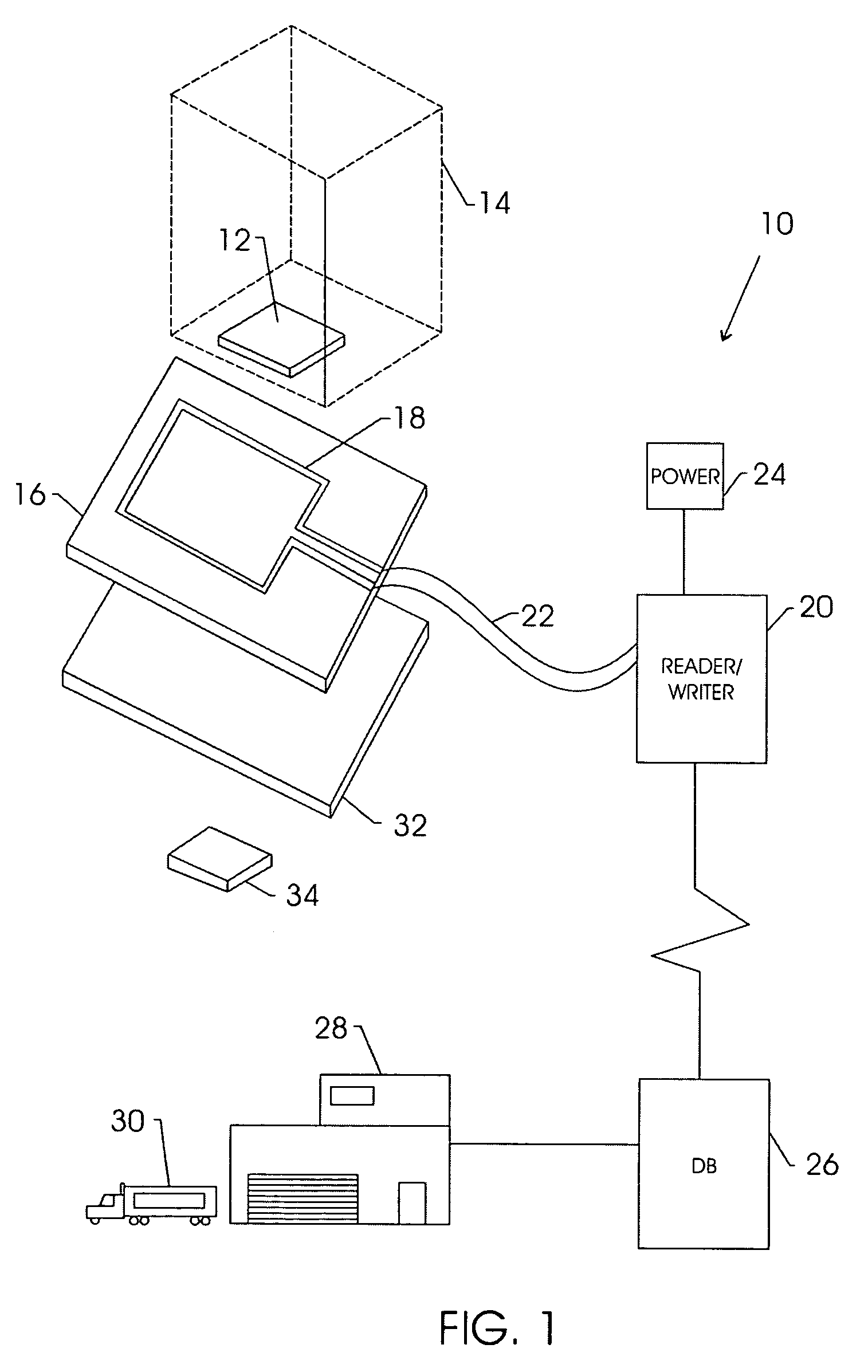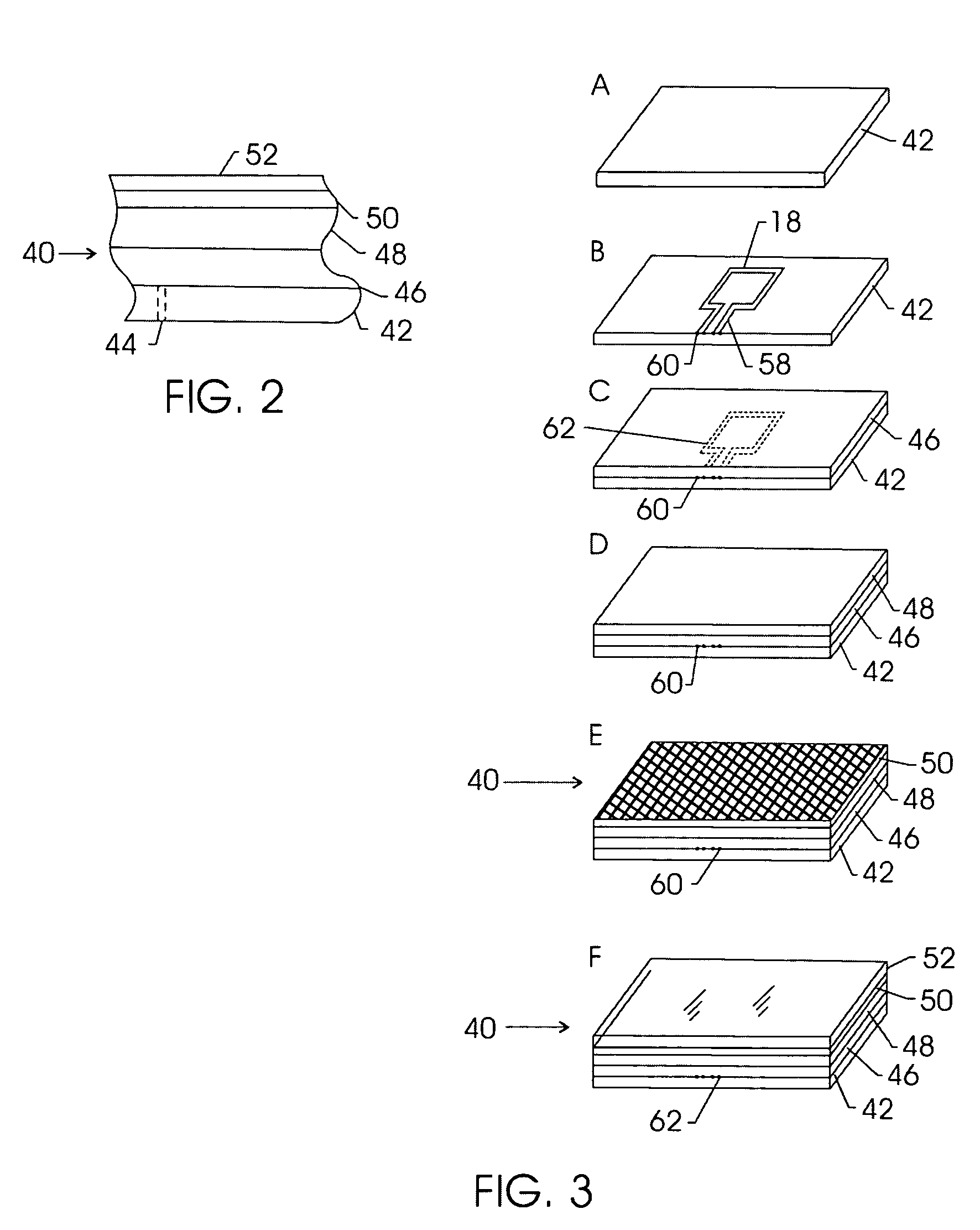Decorative surface covering with embedded RF antenna and RF shield and method for making the same
a technology of decorative surface covering and conductive antenna, which is applied in the direction of protective material radiating elements, burglar alarm mechanical actuation, instruments, etc., can solve the problems of time-consuming sequential scanning process, system limitations, and poor suitability of bar codes
- Summary
- Abstract
- Description
- Claims
- Application Information
AI Technical Summary
Problems solved by technology
Method used
Image
Examples
example 1
[0049]An open loop antenna as shown in figure XX was prepared by the stencil method. The antennae were 16 inches by 16 inches in a single loop. A first example had a conductor (line) width of 0.25 inches. The phenolic treated kraft sheet with the dry antenna was pressed at 1000 p.s.i. The treated kraft sheet was placed between two aluminum foil sheets and the aluminum foil was placed between two stainless steel plates. This sandwich, containing five layers, was then inserted between the platens of a conventional high-pressure laminating press as is commonly used in the industry. The platens were heated with pressurized hot water. The temperature of the platens was ramped from ambient to 273° F. rapidly and then held at 273° F. so that the total heat applied time above ambient was 22 minutes. At the end of the heating time, and while still under pressure the platens were cooled to ambient temperature. The cooling cycle lasted a total of 12 minutes. The samples were removed from the p...
example 2
[0050]Prepared like example 1, except line width of 0.125 inches.
example 3
[0051]Prepared like example 1, except line width of 0.50 inches.
PUM
| Property | Measurement | Unit |
|---|---|---|
| Frequency | aaaaa | aaaaa |
| Frequency | aaaaa | aaaaa |
| Frequency | aaaaa | aaaaa |
Abstract
Description
Claims
Application Information
 Login to View More
Login to View More - R&D
- Intellectual Property
- Life Sciences
- Materials
- Tech Scout
- Unparalleled Data Quality
- Higher Quality Content
- 60% Fewer Hallucinations
Browse by: Latest US Patents, China's latest patents, Technical Efficacy Thesaurus, Application Domain, Technology Topic, Popular Technical Reports.
© 2025 PatSnap. All rights reserved.Legal|Privacy policy|Modern Slavery Act Transparency Statement|Sitemap|About US| Contact US: help@patsnap.com



